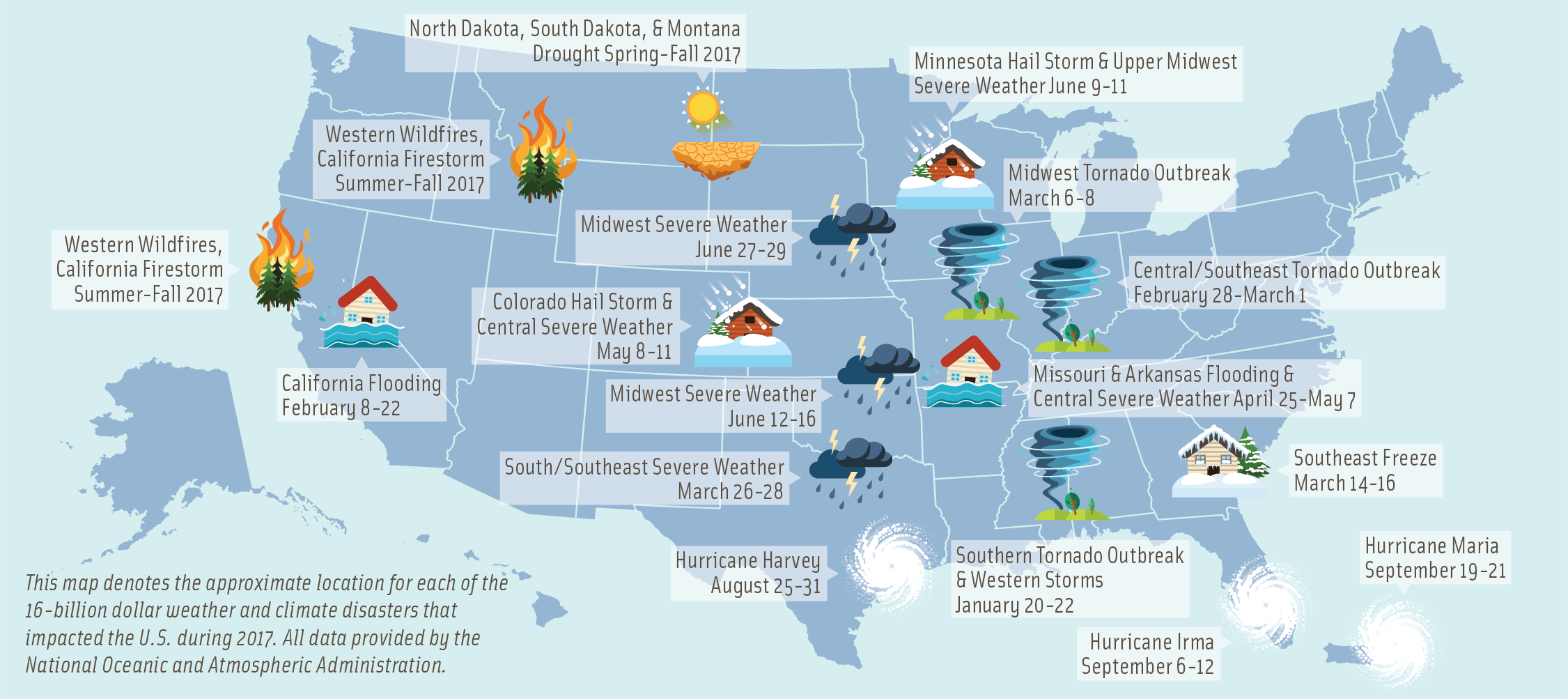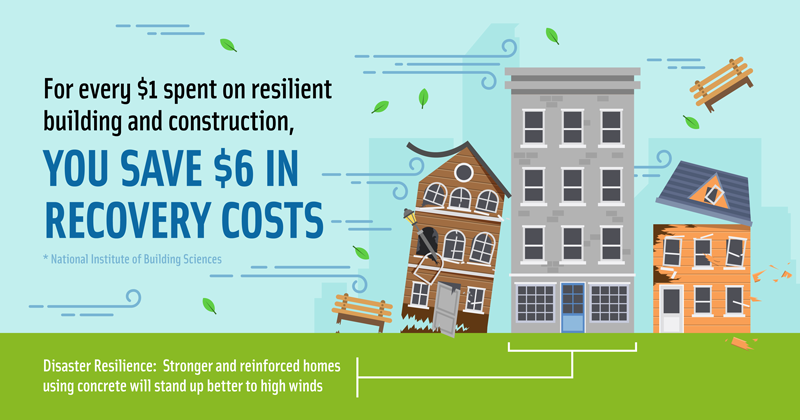Disasters

U.S. 2017 Billion-Dollar Weather and Climate Disasters Map
By The Numbers—The Cost of Disasters
- In 2017, the 16 largest weather events each caused over $1 billion in damage
- In the future, a number of factors, including climate change, will likely lead to increased frequency of billion-dollar disasters.
- $1 spent on resilient building and construction can save $6 in recovery costs.

How Can Concrete Help?
- With reinforced concrete construction, people can shelter in place, the damage from major storms is reduced, and affected communities will spend less energy and fewer re- sources on emergency response, reconstruction, repair, and recovery.
- Sheltering inside a reinforced concrete building is one of the safest places to be during a storm—most safe rooms and shelters are made with concrete systems.
- Because concrete is non-combustible, buildings made with it have good fire ratings, allowing occupants time to escape to safety, and a good chance the structure will survive.
Concrete for Disaster Resilience
During 2017, the U.S. experienced a historic year of weather and climate disasters with a price tag of $306 billion to clean up and rebuild areas affected by extreme weather events. There were 16 separate billion-dollar disaster events including: three tropical cyclones, eight severe storms, two inland floods, a crop freeze, drought, and wildfire. Reinforced concrete structures are inherently resilient, protecting occupants from disasters and reducing recovery costs after the event. As these types of events are only expected to get stronger and more frequent, U.S. taxpayers cannot afford to continue building and rebuilding the way we did in the past. Concrete construction offers long-lasting solutions to build safe, prosperous communities anywhere in the country.
Comparisons of Resilient Characteristics by Structural System

*Concrete systems are assumed to be reinforced, properly designed and detailed with specified concrete compressive strength of 2500 to 4500 psi (17 to 31 MPa) for low-rise and residential construction and 6000 psi (42 MPa) for mid-rise up to 10 stories.
**Manufactured wood includes cross-laminated timber (CLT), nail-laminated timber (NLT), glulam, etc.